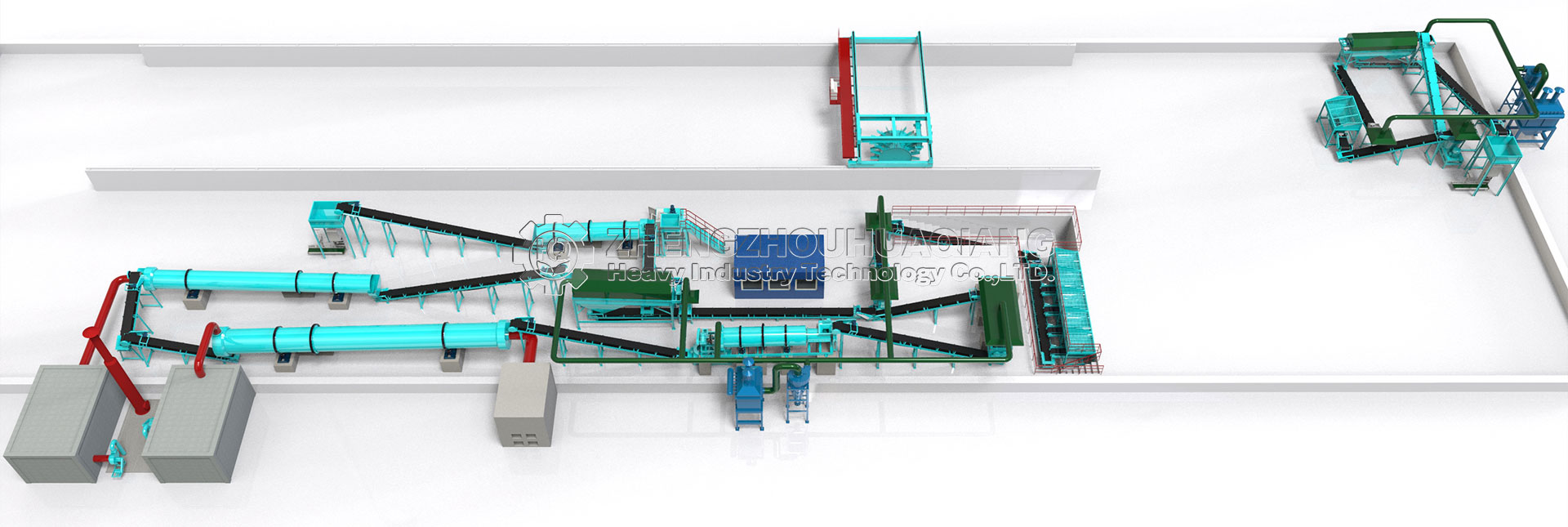How to determine whether the number of fungi and bacteria in the fermentation process of organic fertilizer exceeds the standard
In the process of organic fertilizer production, the quality of fermentation directly affects the effect and safety of the final product. Fungi and bacteria play an important role in the fermentation process, but excessive amounts can lead to fermentation failure or reduced product quality. The following is the method to determine whether the number of fungi and bacteria in the fermentation process of organic fertilizer is excessive.
1. Observe the fermentation state
In the Organic Fertilizer Production Line, the fermentation state is the most intuitive judgment basis. Normal fermentation of organic fertilizer should show uniform color and appropriate humidity. If there is an abnormal sour odor or foamy substance during fermentation, it may be due to abnormal fermentation caused by an excessive number of fungi or bacteria.

2. Check the pH value
pH value is an important index to measure the fermentation environment. Normal fermentation of organic fertilizer pH should be between 6-8. If the pH value is too high or too low, it may affect the normal growth of fungi and bacteria, resulting in a decline in fermentation quality. By regularly testing the pH value, the fermentation conditions can be adjusted in time to ensure that the number of microorganisms is within a reasonable range.
3. Microbial count
The microbial count is a direct way to determine whether the number of fungi and bacteria exceeds the standard. By collecting fermentation samples for microbial count, we can accurately understand the changes in the number of microorganisms during fermentation. Common methods include plate counting and microscopic observation. If the number of microorganisms exceeds the limit, measures can be taken to adjust, such as adding the right amount of Compost Turning Machine(such as Windrow Compost Turning Machine) to enhance ventilation and oxygen supply.

4. Detect organic content
In the process of organic fertilizer fermentation, the content of organic matter is also an important index. If the content of organic matter is too high or too low, it will affect the normal growth of fungi and bacteria. By detecting the organic content, it can be determined whether the fermentation is normal, and adjust the fermentation conditions in time, such as adding organic substances or strengthening ventilation.
5. Use professional equipment
Modern organic fertilizer production lines are often equipped with specialized equipment, such as Rotary Drum Granulator and Rotary Screening Machine, which can help monitor and control the number of microorganisms in the fermentation process and ensure fermentation quality.

6. Temperature monitoring
Temperature is another key factor in the fermentation process. The temperature of normal fermentation should be maintained between 50-60 ° C. If the temperature is too high or too low, it may mean an imbalance in the number of microbes. Through temperature monitoring, problems can be detected and adjusted in time to ensure the smooth fermentation process.
In summary, to determine whether the number of fungi and bacteria in the fermentation process of organic fertilizer exceeds the standard, it is necessary to comprehensively observe the fermentation state, detect pH value, microbial count, organic matter content and temperature and other indicators. Through scientific methods and advanced equipment, the number of microorganisms in the fermentation process can be effectively controlled to ensure the production of high-quality organic fertilizer and promote the sustainable development of agriculture.
